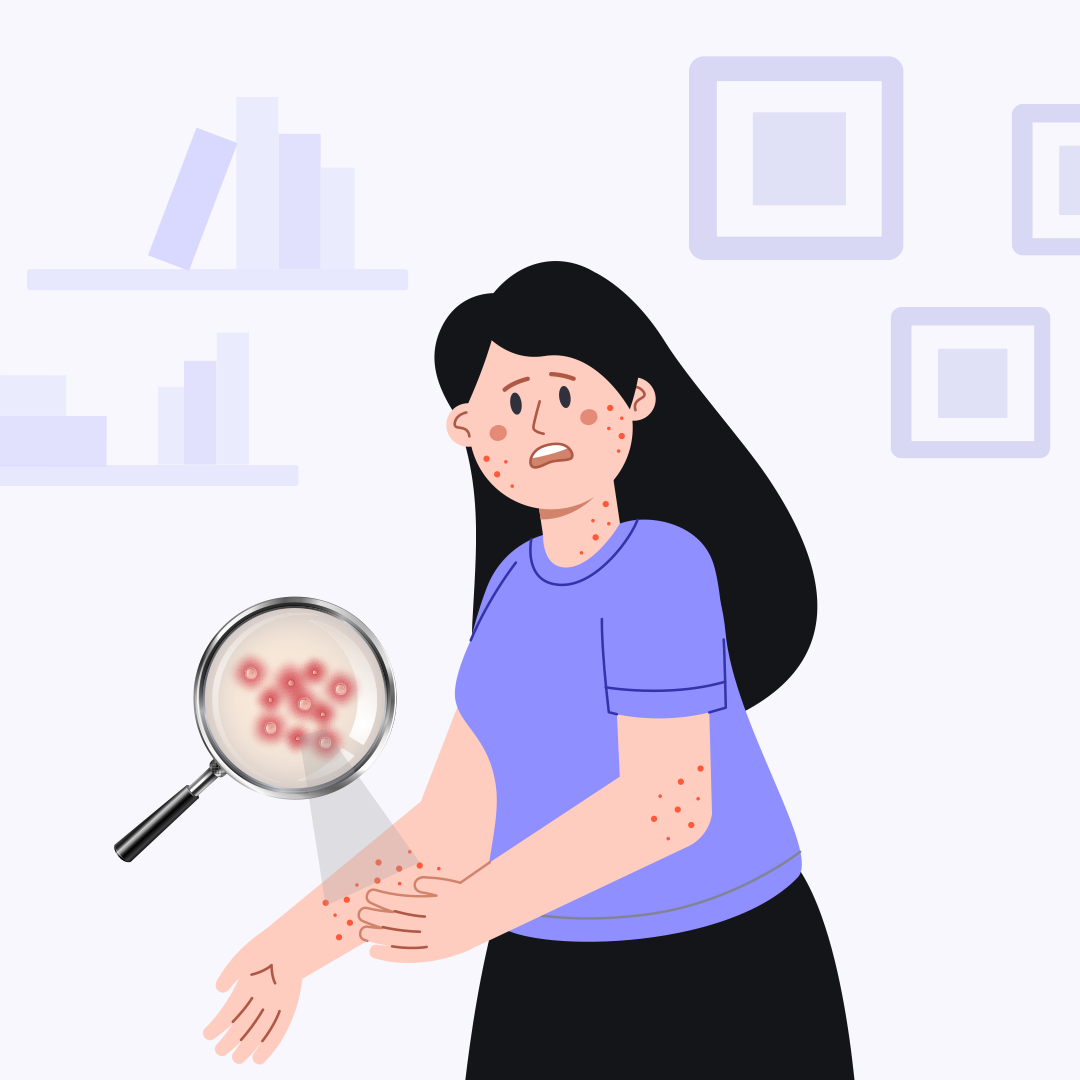Fungal Infections in Humid Weather: Prevention and Treatment Tips

Did you know that out of over a million different types of fungi, about a few hundred can cause infections? While fungi exist everywhere, including on and within your body, they do not cause any problems to your skin. However, when they multiply faster than usual or enter your skin through cuts or bruises, they can cause infections.
Fungi thrive in hot and humid conditions. Sweaty and damp areas without any ventilations are perfect for fungal growth. Feet, nail beds, groin, armpits, and skin folds are areas on your body prone to fungal infections.
In this article, we will shed light on common fungal infections, covering symptoms, treatment, and tips for prevention.
Common Fungal Infections During Humid Weather
Hot and humid weather during the monsoon can create the perfect environment for fungal growth. Getting an infection during this time is, therefore, not an uncommon occurrence. You can easily acquire fungal skin infections through direct contact with an infected person. Although contagious, fungal infections are rarely serious unless you have a compromised immune system.
While several fungal infections affect your skin during the humid monsoon weather, we will discuss a few common ones.
1. Candida infection
Candida is a yeast that naturally exists on your body, particularly your skin. Abnormal overgrowth of yeast can lead to candida infection. These infections are common in moist and poorly ventilated areas of your body - the folds of buttocks, underneath the breast, armpits, and groin.
Symptoms of candida infection include:
- Reddish, acne-like rashes
- Itching
- Burning sensation
2. Ringworm
Another frequently occurring fungal infection is ringworm. It occurs due to a fungus called Tinea Corporis and is highly contagious.
Seen commonly on the torso and limbs, the most characteristic feature of this fungal infection is a ring-shaped rash. The rash edges appear raised, while the inner skin appears healthy. This rash is often very itchy and can spread rapidly.
3. Athlete's Foot
Athlete's foot is a fungal infection of your feet, specifically between the toes. Symptoms of this fungal infection include:
- Red, dry and flaky skin
- Blisters or cracks on the soles of your feet
- Itching, burning sensations on and around the toes
4. Nail Fungal Infections
Onchymosis or nail fungal infections are more common in toenails than fingernails. Wearing shoes that are wet from the rain for prolonged periods and unhygienic foot-care habits are the most common causes of nail fungal infections.
Nails affected by fungal infection often present some or all of these symptoms:
- Flaky with white patches
- Discolouration
- Pitting at the top
- Brittle or thick
- Raised nails that are separated from the nail beds
How to Prevent Fungal Infections?
Preventing fungal infections is simply a matter of practising good hygiene. If you are wondering how to prevent fungal infections, here are some tips for you:
- Wear clean clothes, particularly undergarments and socks.
- Choose natural fabric clothing that allows ventilation.
- Choose well-fitted clothes and shoes.
- Avoid sharing personal items such as towels, clothing, shaving kits, etc.
- Wash and dry yourself after engaging in activities that can cause sweating, such as exercising or dancing.
- Avoid walking in public spaces with bare feet; use sandals or flip-flops instead.
- Sanitize shared surfaces like gym mats and work desktops before use.
- Wash and clean your hands after touching any animal - especially those showing symptoms of fungal infection.
How to Treat Fungal Infections?
Antifungal medications can help you treat fungal infections. These are available in topical and oral form.
Topical antifungal medications include creams, gels, lotions and solutions that you can apply directly to the infected areas. Over-the-counter antifungal topical medications are effective against mild fungal infections.
If you have a large area affected by a fungal infection or multiple areas affected, topical application may not suffice. Your physician will prescribe oral antifungal tablets for such severe infections. Depending on the severity and extent of the infection, you may need to take these medications for several days or weeks.
Home remedies for fungal infection may be effective in some cases, providing relief from the itching and burning sensations. Commonly available household ingredients such as turmeric, garlic, honey, coconut oil and neem can be helpful in soothing itchiness or soreness. However, these home remedies are not a standalone cure and their effect may vary for each individual. Consulting your physician for guidance is essential for treatment.
Closing Thoughts
Fungal infections thrive in hot and humid weather; with sweating and poor ventilation acting as catalysts. The best means of preventing a fungal infection is maintaining good hygiene.
Still confused over how to treat your fungal infection? Bharosa.life can help you choose the doctor best suited for your treatment. The platform offers authentic patient experience reviews so you can make an informed decision for your medical needs. Instead of bearing the pain and irritation of those rashes, it's best to consult a physician for treatment. Visit our website to find the best resources for your needs today!
